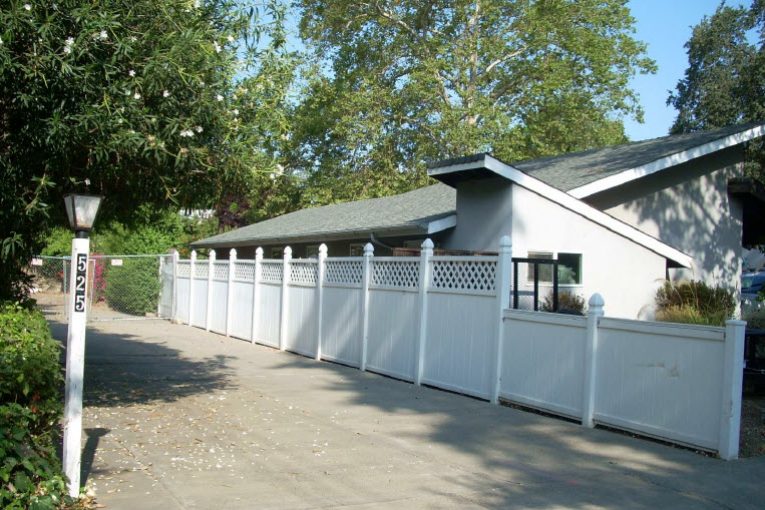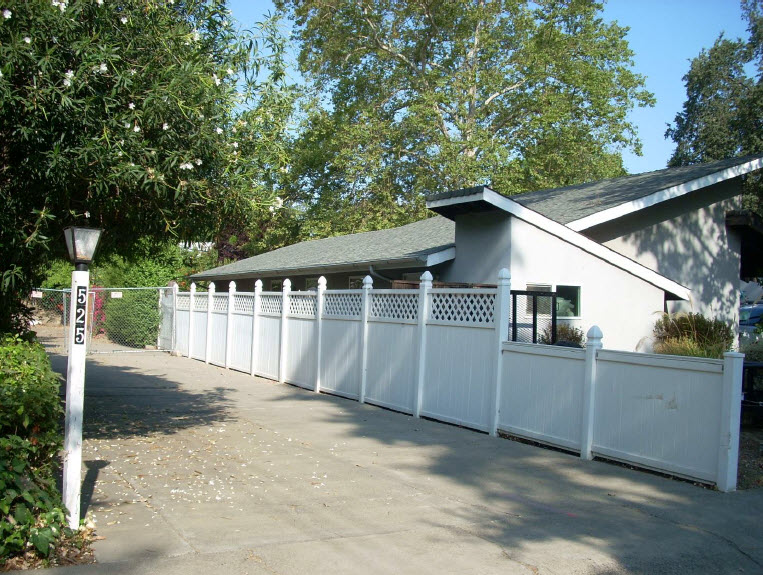

Earlier this year, the council adopted an urgency ordinance to allow for “neighborhood notification and engagement before the construction of new two-story residences and larger additions to existing residences in existing neighborhoods.”
The ordinance is focused on new construction of single-family dwellings, duplexes or two-family dwellings that are two or more stories and additions to such dwellings that “are in excess of 40% of the gross square footage of the dwelling at the time of effective date of this ordinance.”
Triggering this concern were two projects that drew the concern of neighbors – 525 Oak Avenue and 201 Russell Boulevard, which was recently approved and met all of the current regulations, but was massive and the noticing was insufficient.
Back on August 28, the council directed staff to address concerns from neighbors “about the lack of notification to existing residents of large-scale additions.”
Staff writes: “Neighborhood concerns have been focused in the area of both intensity of use, and new construction and additions being out of scale and incongruent with the existing built environment.”
Prior to the adoption of the urgency ordinance on February, such projects, “when found consistent with all zoning regulations, require only a building permit, which affords no City discretionary  review or neighbor notification.”
review or neighbor notification.”
Therefore, “the City (had) no authority to deny such a project, or to require adjustments in design to address potential neighborhood concerns.”
The Planning Commission reviewed the ordinance on April 10 and recommended the council approve the ordinance on a 6-1 vote.
Of note, the commission majority agreed that there was “need to address impacts of large additions and new two-story constructions” while, at the same time, it had “varying opinions on how best the impacts could be addressed.”
In the end, the commission supported making the urgency ordinance permanent, but the dissenting commission argued there should be more done to address the impacts to trees.
Staff writes, “The purpose of the urgency ordinance was to set an immediate opportunity for neighborhood notification for all newly constructed two-story residences, significant additions, and an opportunity to review the site plan and design of these projects to address concerns similar to those expressed in the past.”
The proposed process is for a staff level administrative review which would require notice to all residents and property owners within 500 feet of the project.
Staff would review the noticing map “to ensure that the boundary is sensible and may expand the 500’ notice when reasonable to do so.”
Neighbors would then have a ten-day comment period to review the proposal and post comments or questions to staff.
At this time, staff believes that existing height and area regulations are compatible with existing neighborhoods and thus do not need additional review. But those that exceed a 40 percent increase can create concerns about compatibility and this will allow for a review process that was precluded previously.
Back in February, City Planner Eric Lee told the Vanguard, “The point we would make with this one is that it was a ministerial building permit and did not require any special planning application or review because it met all the necessary zoning and development standards.”
He added, “There was no mechanism requiring additional review, but now with the urgency ordinance something like this would be subject to the design review process requirement outlined in it.”
As Community Development Director Ashley Feeney explained, “They were exploring coming back with two five-bedroom homes and two two-bedroom ADUs that would have been an over-the-counter ministerial review with no notice.”
However, with the urgency ordinance in effect, “(such a project) would require a design review application per the recently adopted urgency ordinance.”
We don’t want to have all of the additions covered,” Asley Feeney explained at the council meeting. “We wanted to go ahead and capture larger additions… Really looking at the additions that cause the most concerns. Forty percent is the sweet spot where we will have the design review.”
Mr. Feeney explained, “Neighborhood noticing and due process” is “really the chief concern when neighbors are surprised by new construction, especially when it’s large and out of scale.”
As Councilmember Lucas Frerichs pointed out, this is an issue that is not about students at all, it is about “quality of life in neighborhoods.” These proposals for huge additions and huge amounts of additional rooms were out of proportion with the rest of the neighborhood.
“There is a need for more scrutiny for these large expansions,” he said. “There might not be more than 20 a year, but the ones that have been coming in are in definite need of additional scrutiny.”
He also pointed out that most of these are happening only in a few central neighborhoods most immediately adjacent to the university.
Councilmember Dan Carson reiterated that this was not intended to impact students.
He explained, “We’ve worked hard to get city and voter approval for 4000 rental units in this town, we’ve worked hard with the university to get 5000 additional on-campus units in just the next five to six years. We care about providing housing for students, and our citizens in general, but we need to be careful about the impacts in our neighborhood.”
He said that “there’s no denying they have quality of life impacts.”
—David M. Greenwald reporting







I know some students who are upset about this – but to me this is a good reason why we should simply build student oriented housing and avoid the conflict between students and neighbors.
I particularly “like” comments such as this:
It’s exactly about students, and their impact on surrounding neighborhoods. (Hence, the title of the article, regarding “minidorms”.)
It is an attempt to prevent the expansion of minidorms, which (according to your own statement) is viewed as impacting students (and will limit their future options). That is a fact, regardless of whether or not one supports the ordinance.
The megadorms will make very little difference, for those students who prefer the flexibility, price, and free parking availability of minidorms. (Since costly building expansion has now been curtailed, the rental price will likely remain low in existing buildings.)
In a way, the megadorms are similar to building a new “paid” parking lot (with meters and more restrictions), while simultaneously maintaining free street parking (in the form of existing buildings suitable for minidorms).
We shall see what actually happens.